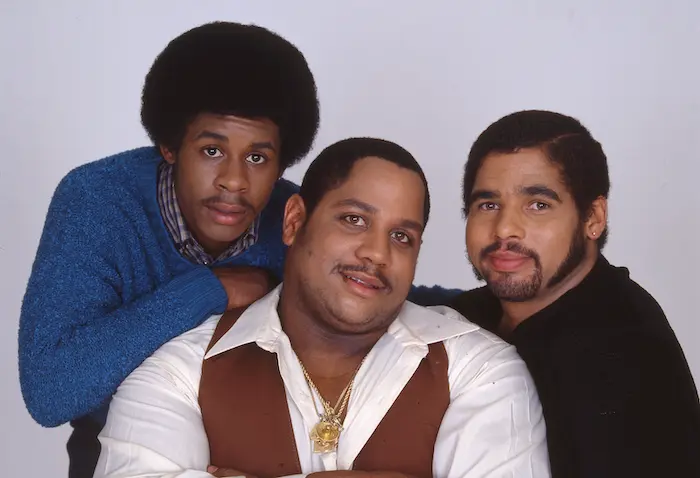Rap music, an integral part of modern musical culture, has a rich history filled with landmark moments. One of the most significant of these moments came with the release of “Rapper’s Delight” by The Sugarhill Gang. This track is widely regarded as the first major rap hit, bringing the genre into the mainstream and paving the way for countless artists who followed.
I. Introduction to The Sugarhill Gang
The Sugarhill Gang was formed in 1979 in Englewood, New Jersey. The group consisted of three members: Michael “Wonder Mike” Wright, Guy “Master Gee” O’Brien, and Henry “Big Bank Hank” Jackson. The trio was brought together by Sylvia Robinson, co-founder of Sugar Hill Records, who had a vision of creating a rap group to capitalize on the burgeoning hip-hop movement.
II. The Context of Rap and Hip-Hop in the Late 1970s
Before “Rapper’s Delight,” rap music was primarily an underground phenomenon, largely confined to block parties and nightclubs in New York City. DJs like Kool Herc, Grandmaster Flash, and Afrika Bambaataa were pioneers, developing the techniques and styles that would shape the genre. They used breakbeats, scratching, and lyrical improvisation to entertain crowds, but the music was not yet commercially viable.
III. Something about “Rapper’s Delight”
1. The Creation of “Rapper’s Delight”
In the summer of 1979, Sylvia Robinson heard about the new rap craze sweeping through New York. She saw its potential to revolutionize the music industry and set out to create a rap record. Robinson’s son, Joey, introduced her to three young rappers who would become The Sugarhill Gang.
2. Recording the Iconic Track
“Rapper’s Delight” was recorded in a single take using the instrumental track from Chic’s “Good Times.” Bernard Edwards and Nile Rodgers, the songwriters for “Good Times,” later received credit on the track due to the use of their music. The song features each member of The Sugarhill Gang taking turns rapping, showcasing their unique styles and personalities.
3. The Release and Impact of “Rapper’s Delight”
Released on September 16, 1979, “Rapper’s Delight” quickly gained popularity. It broke into the Top 40 on the Billboard Hot 100, an unprecedented achievement for a rap song at the time. The track sold millions of copies and was instrumental in bringing rap music to a wider audience.
IV. Reasons for thePopularity
1. The Lyrics and Their Significance
The lyrics of “Rapper’s Delight” were light-hearted and fun, reflecting the party atmosphere of early hip-hop. They included playful boasts, humorous anecdotes, and clever wordplay. The song’s catchy chorus and infectious beat made it a hit on dance floors and radio stations alike.
2. The Role of Sugar Hill Records
Sugar Hill Records played a crucial role in the success of “Rapper’s Delight.” Founded by Sylvia and Joe Robinson in 1979, the label was dedicated to promoting rap and hip-hop music. Sugar Hill Records’ innovative approach to marketing and distribution helped “Rapper’s Delight” reach a global audience, establishing the label as a powerhouse in the industry.
V. Legacy and Further Influence
1. The Legacy of The Sugarhill Gang
The success of “Rapper’s Delight” marked the beginning of a new era in music. The Sugarhill Gang became household names, and their hit single laid the groundwork for the future of rap music. The song’s influence can be seen in the countless artists and tracks that followed, as it demonstrated the commercial viability of rap music and opened doors for the genre’s expansion.
2. The Influence on Future Artists
“Rapper’s Delight” inspired a generation of artists to pursue careers in rap music. It showed that rap could achieve mainstream success and provided a blueprint for future hits. Artists like Run-D.M.C., LL Cool J, and the Beastie Boys all cited The Sugarhill Gang as an influence, and the song’s impact can still be felt in contemporary rap and hip-hop.
3. Cultural and Historical Significance
“Rapper’s Delight” is not just a song; it is a cultural milestone. It marked the transition of rap from an underground movement to a mainstream phenomenon. The track’s success highlighted the potential of rap music to address social issues, tell stories, and connect with audiences on a profound level.
4. The Evolution of Rap and Hip-Hop
Following the success of “Rapper’s Delight,” rap and hip-hop continued to evolve. The 1980s and 1990s saw the rise of influential artists and subgenres, including gangsta rap, conscious rap, and alternative hip-hop. Each wave of artists built on the foundation laid by The Sugarhill Gang, pushing the boundaries of the genre and exploring new themes and sounds.
VI. The Controversy Surrounding “Rapper’s Delight”
While “Rapper’s Delight” is celebrated for its impact, it was not without controversy. Some critics argued that the song commercialized rap music and strayed from its roots. Additionally, there were disputes over the authorship of the lyrics and the use of Chic’s “Good Times” without initial permission. Despite these controversies, the song’s importance in the history of rap music remains undisputed.
See Also: Rock N Roll vs Blues, Jazz and Country Music: What’s the Connection?
VII. Conclusion
The release of “Rapper’s Delight” by The Sugarhill Gang was a defining moment in the history of music. It introduced rap to a global audience and demonstrated the genre’s potential for mainstream success. The song’s infectious rhythm, playful lyrics, and groundbreaking impact continue to be celebrated by music fans and historians alike.
As rap and hip-hop continue to evolve, the legacy of “Rapper’s Delight” endures. It remains a testament to the creativity and innovation of The Sugarhill Gang and a reminder of the genre’s humble beginnings. The song’s influence on the music industry is immeasurable, and its place in the pantheon of great musical achievements is firmly secured.
In retrospect, “Rapper’s Delight” stands as a symbol of the power of music to transcend boundaries and bring people together. The Sugarhill Gang’s contribution to the world of rap is monumental, and their pioneering efforts have left an indelible mark on the fabric of musical history.

